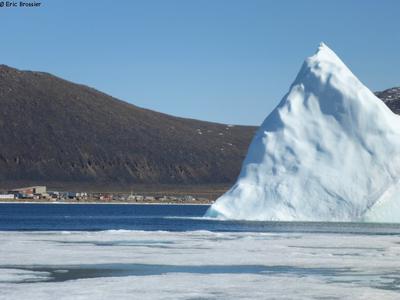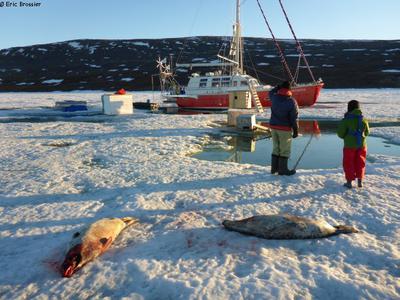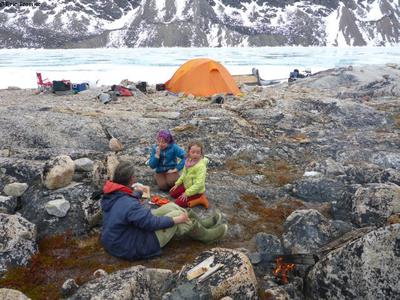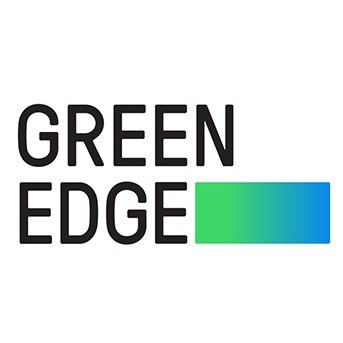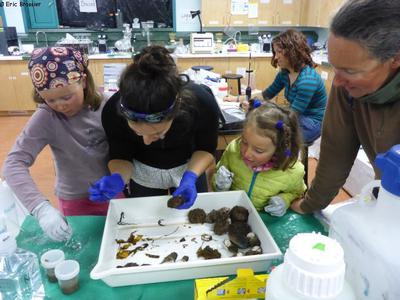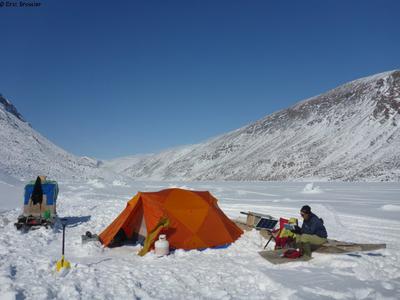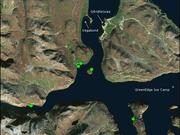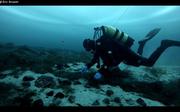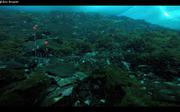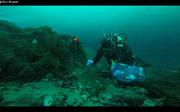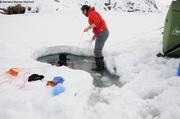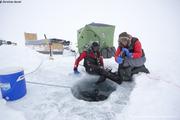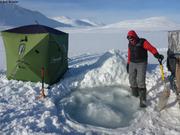Melting
This morning, open water areas appear everywhere! I don't feel completely safe when crossing the channel between Baffin Island, where Vagabond spent the last 3 winters, and Broughton Island, where is the village of Qikiqtarjuaq...
8°C, bright sunshine, wind and even quite strong tidal current: the melting is fast!
This evening, after a day at the GreenEdge ice camp, I let the snowmobile near the village and walk back to our boat, quietly bypassing the open water to the north, between the icebergs. While our powerful machines, at a good speed, are able to stay on the surface, I like the slowness and lightness of walking!
Fortunately, everything we had heavy and bulky on the ice next to Vagabond, has already been moved using the snowmobile. Last move, Aurore and Leonie's cabin was set up on land yesterday morning, just before I went to the ice camp!
The day before, we towed the dinghy with the skidoo to the open water, then we made the first crossing by boat to the village, for Canada Day. How exciting to sail again!
